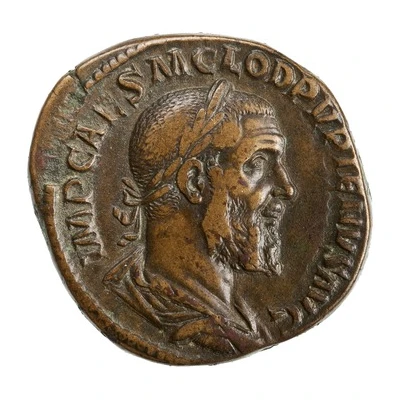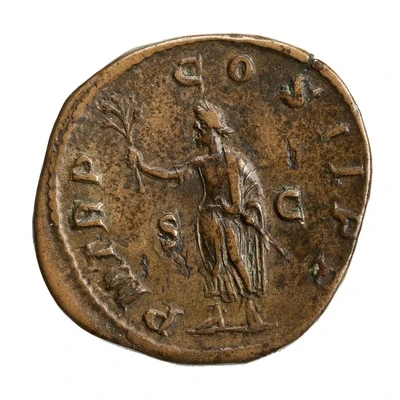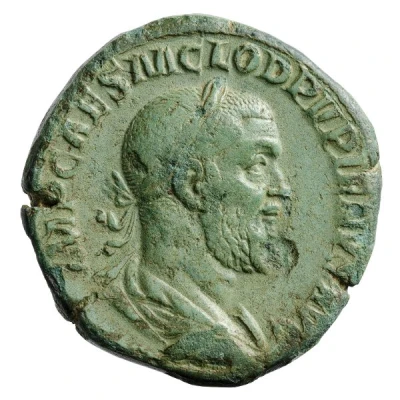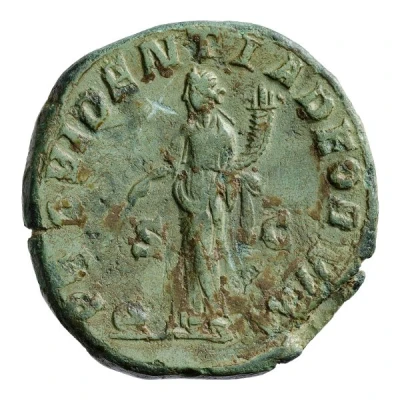Sestertius - Pupienus P M TR P COS II P P S C; Felicitas
238 year| Bronze | - | - |
| Issuer | Rome › Roman Empire (27 BC - 395 AD) |
|---|---|
| Emperor | Pupienus (Marcus Clodius Pupienus Maximus) (238) |
| Type | Standard circulation coin |
| Year | 238 |
| Value | Sestertius (⅛) |
| Currency | Antoninianus, Reform of Caracalla (AD 215 – 301) |
| Composition | Bronze |
| Shape | Round (irregular) |
| Technique | Hammered |
| Demonetized | Yes |
| Updated | 2024-10-05 |
| Numista | N#280663 |
|---|---|
| Rarity index | 97% |
Reverse
Felicitas, draped, standing left, holding caduceus in right hand and short sceptre in left hand.
Script: Latin
Lettering: P M TR P COS II P P S C
Translation:
Pontifex Maximus, Tribunicia Potestate, Consul Secundum, Pater Patriae, Senatus Consultum.
High priest, holder of tribunician power, consul for the second time, father of the nation, Decree of the senate.
Comment
Source:Online Coins of the Roman Empire (OCRE)
Interesting fact
The Sestertius coin , which features Pupienus (also known as Pupienus Maximus) on one side and Felicitas on the other, was minted during a time of great turmoil in the Roman Empire. Pupienus was a Roman general who became emperor in 238 AD, during a period known as the "Year of the Six Emperors," when there were multiple claimants to the throne. He ruled for a brief period before being assassinated, and this coin was likely minted during his reign. Despite the turmoil of the time, the coin still bears the image of Felicitas, the goddess of good luck and prosperity, indicating that the Roman people still held onto hopes for a better future.



